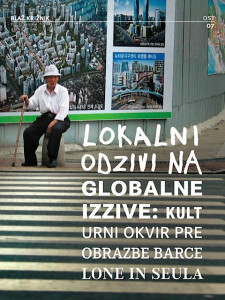With Park Hayun
Crossroads: Asian Streets in the Dynamics of Change, pp. 8-17
Heng Chye Kiang and Zhang Ye (eds.)
School of Design and Environment, National University of Singapore | Singapore | 2016 | ISBN 978-981-11-1812-8
Cities are faced with growing social and economic disparities, environmental problems and political tensions, which erode their capacity to effectively cope with social, economic and environmental risks. Community-based urban regeneration has been recognised as one of the key approaches that can help cities to achieve a socially inclusive and environmentally balanced urban development. While different views exist on the role of communal space for successful urban regeneration, recovery of local streets, plazas or parks is recognised to play a vital role in bringing together residents with different economic, social and cultural backgrounds. This is seen as an important step towards sustainable development of cities.
Seoul Metropolitan Government has recently placed community building and urban regeneration at the centre of their efforts to address social, economic and environmental challenges in the city. Community-based urban regeneration is expected to improve built environment as well as restore communal life and shared identities in localities. In result, there is also a growing interest in Seoul in recovering streets as spaces of everyday life.
This paper explores urban regeneration of Samdeok Town to understand the changing role of streets as communal space in localities. By taking the Residential Environment Management Project as a case study, this research focuses on how the community-building and urban regeneration affect perception of streets among the residents and their appropriation of streets as communal space in Samdeok Town. The authors conducted extensive fieldwork and attended community workshops as well as interviews with several residents, urban planners, community activists and researchers. The research results show that the perception of streets has been largely changed and the residents have successfully recovered them as their communal space, which played the key role in successful community-based urban regeneration of Samdeok Town.
Source: Academia.edu

